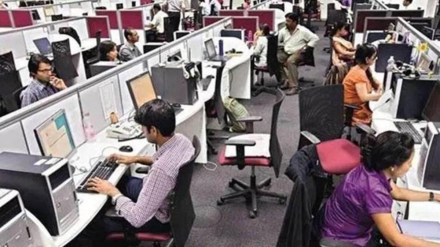India’s services activity recorded a slowdown in May, with the final HSBC India Services Purchasing Managers’ Index, compiled by S&P Global, softening to 60.2 in May from April’s 60.8. The growth, which was at its lowest mark since last December, was slowed to a five-month low in May due to weakened domestic demand, the survey stated.
Despite the slowdown, the index remained comfortably above the neutral mark of 50.0 in May, highlighting a sharp upturn in output. Growth, per S&P Global, was reportedly supported by rising sales, productivity gains and demand strength. The upturn was somewhat hampered by competitive and price pressures. The survey report said that the May data showed robust increases in new business intakes which continued to underpin output growth across India’s service economy. “Rates of expansion eased to the slowest in the calendar year-to-date, however, amid fierce competition, price pressures and a severe heatwave. Both input costs and output charges rose to greater extents,” it said.
Maitreyi Das, Global Economist at HSBC, said, “India’s service activity rose at a slightly softer pace in May, with domestic new orders easing slightly, but remaining robust, implying strong demand conditions and successful advertising. New export orders surged at a record pace, with broad-based demand from across the globe. On the price front, cost pressures ticked up in May led by higher raw material and labour costs. Firms were only able to transfer a part of the price rise to customers. Good news is the level of optimism about the year-ahead outlook rose at the fastest pace in eight months, leading service firms to increase their staffing levels. Overall composite output rose at a slightly slower pace, led by slower rises in both factory production and service activity.”
One area that improved substantially in May was new export orders, with growth climbing to the fastest seen since the inception of the series in September 2014. Survey participants noted strong growth of demand from Asia, Africa, Europe, the Middle East and the US.
Meanwhile, the report stated that cost pressures intensified in May. According to panel members, outlays on materials and labour rose. With regards to the former, there were mentions of higher prices for meat, packaging and vegetables.
While some companies suggested that additional labour costs stemmed from overtime payments and upward salary revisions due to demand strength and productivity gains, several firms indicated having taken on extra staff. Employment had risen to the greatest extent since August 2022. Companies reported having hired junior and mid-level workers in May. One factor that underpinned recruitment was a pick-up in capacity pressures among service providers.
Furthermore, as business activity in manufacturing and services eased slightly in May, HSBC India composite PMI output index slipped from 61.5 in April to 60.5 in May, highlighting the slowest rate of expansion since last December.
